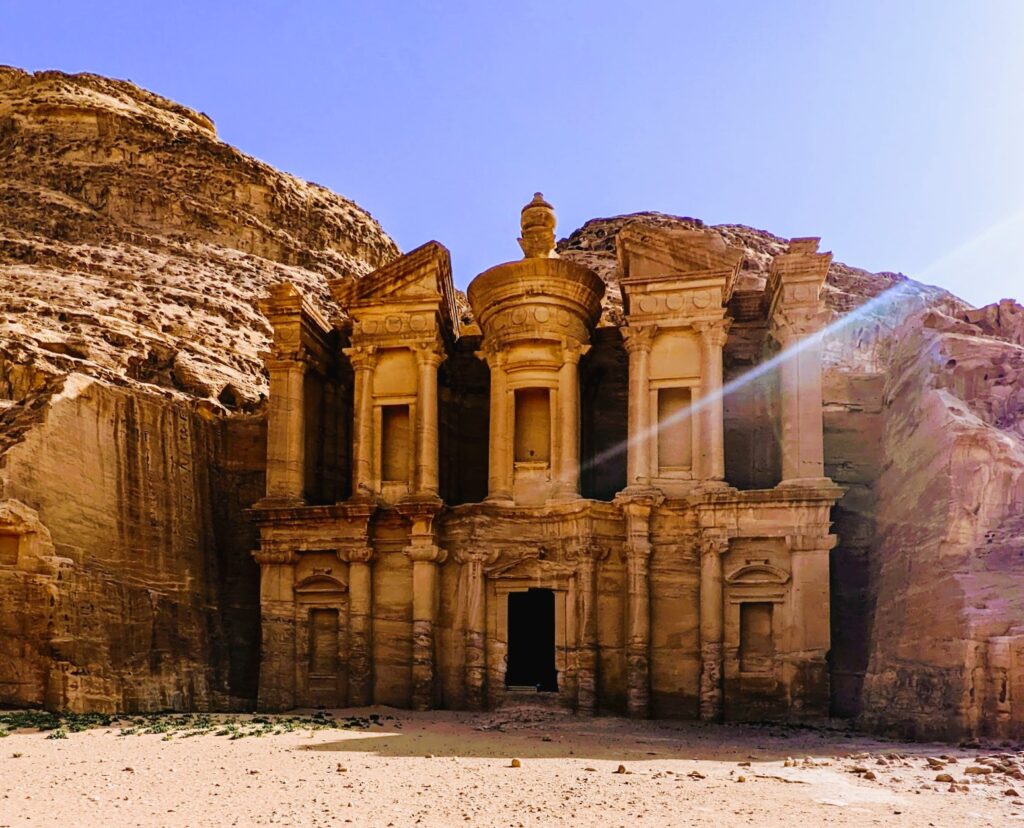
Striving for the Pinnacle in Petra
by Mark Probst
I sipped on my coffee from a dented copper cezve, a small, long-handled pot typically used to make Turkish coffee, and nibbled on my baklava. I couldn’t stop looking at the donkey that was staring at me, hoping I would give him a little piece of my breakfast. Still out of breath from our incredibly fast trek up the thousand or so stairs built into a huge mountain range over two thousand years ago, Deborah and I just sat in awe and appreciation as we gazed at the legendary Monastery.
It was 8:30 am, and we were part of a handful of people viewing this magnificent achievement, which we knew within an hour would be overrun with tourists. We just sat there in silence, taking in this amazing structure on the top of a very tall mountain in the middle of the Arabian desert.
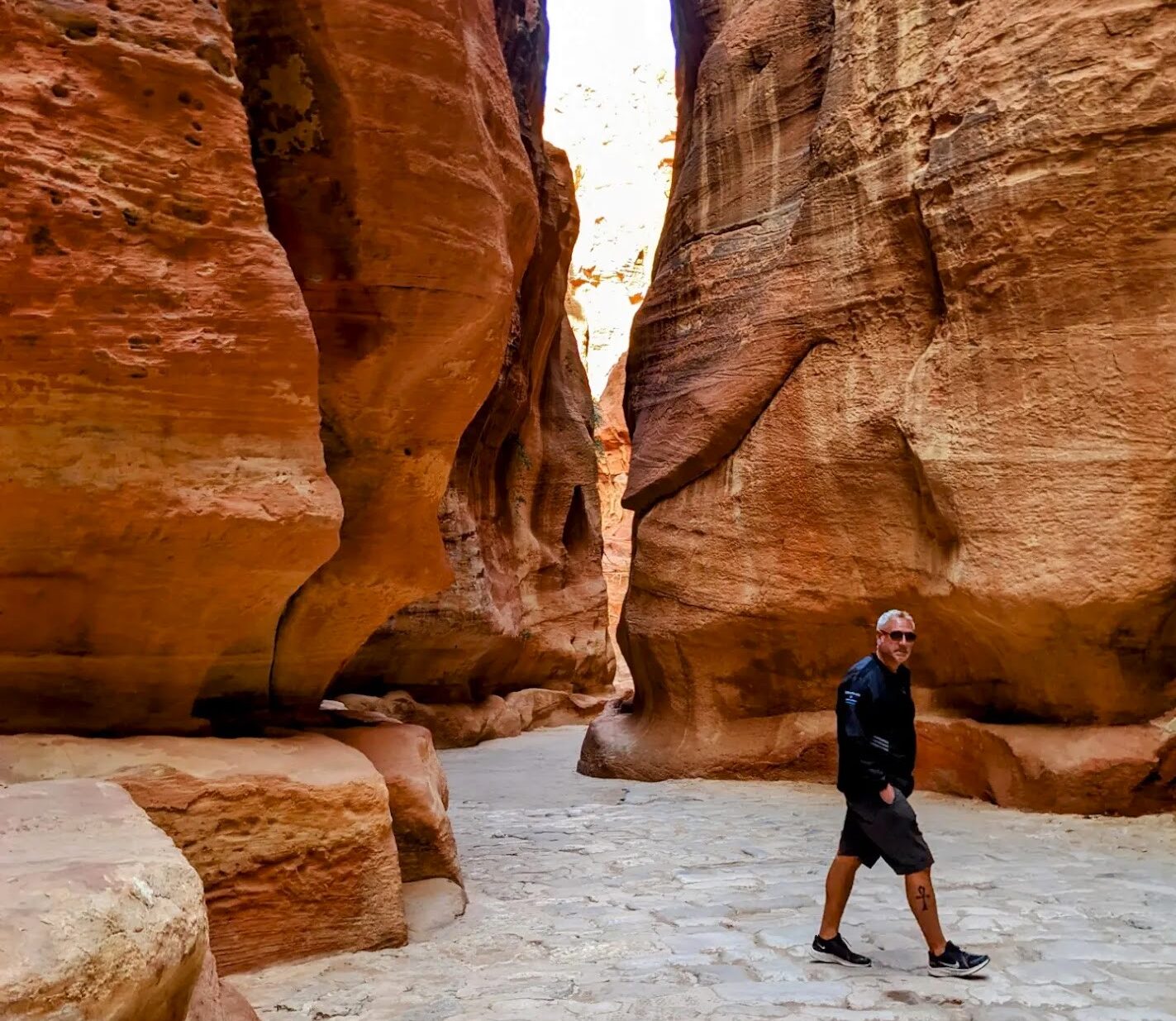
The Rose City
The ancient site of Petra is, without a doubt, one of the most amazing experiences I have had in my life. Making the new seven wonders of the world list in 2000, this two-thousand-plus-year-old city in Jordan flourished as an original hub on the spice trade route, and like its fellow “Wonders” on the list, is truly an amazing testament to humanity’s ability to design and create.
Dating to around 300 B.C., Petra, the ancient capital of the Nabatean Kingdom, is mostly known today for its two iconic buildings: the Treasury and the Monastery. But the vast city also comprises numerous other breathtaking structures, such as the Petra Theater, the Temple of Dushares, and the Great Temple.
The carved path leading to the city from the current-day commercial area of Petra is long, and at times brutal depending on the time of day and time of year you visit. As you make your way through the gates and down the hill, it takes about ten minutes before you enter the corridor known as Al Siq, which is essentially a narrow canyon that snakes its way through the pink sandstone cliffs.
As you continue down this path, passing numerous tombs and temples, you are constantly struck by the beauty and magnitude of the sandstone, the dramatic verticality of the cliffs as they rise above you on both sides, and the unique way the tombs have been carved and woven into the rock.
After another thirty minutes down Al Siq, weaving back and forth, you suddenly catch a partial glimpse of a structure ahead of you. You only see one part of the building, then the other side as you move closer, and suddenly as you take the last turn, you make your way into a clearing, and there it is: the Treasury.
Al-Khazneh, which means ‘treasury’ in Arabic, was finished in approximately 1 AD as a mausoleum for the Nabatean King Aretas IV, and it is absolutely breathtaking in person. Impeccably carved into the sandstone cliff, the structure is approximately 135 feet high and is in unbelievable condition for being over 2,000 years old. Additionally, the color of the sandstone it is carved from creates a reddish-pink hue, which is why it is also called the Rose City.
Standing in front of the Treasury is truly an awesome sight, and the cliffs surrounding the opening add to the impressiveness of this man-made feat, as you really get a sense of the before and after.
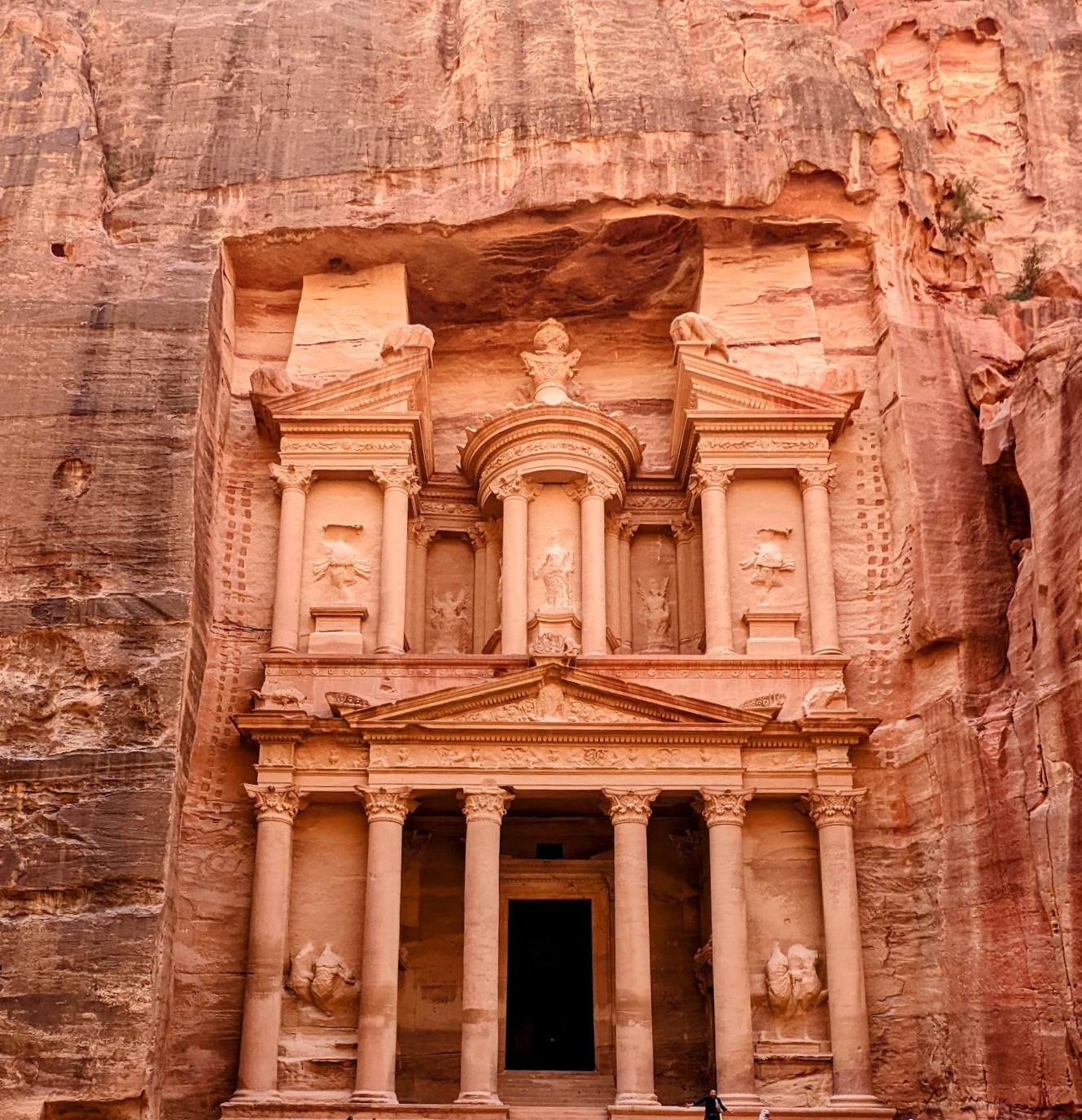
Indiana Jones And The Lost City
Equally impressive is how long this magnificent structure was hidden from the world. After the evolution of ships and sea routes moved the spice trade from land to water, Petra started a steady decline and was virtually unknown until it was rediscovered in 1812 by Swiss explorer Johann Ludwig Burckhardt.
Then two major external events put Petra on the map for world travelers looking for amazing experiences. The first occurred in 1989, when Steven Spielberg decided the Treasury would be the perfect building for Indiana Jones to run out of after finally getting his hands on the Holy Grail. The iconic scene of him escaping the incredible structure blew audiences away, leaving them saying, “How did Steven build that set?”
The second event was the aforementioned christening of the ancient city as one of the new seven wonders of the world.
It’s hard to convey how vast and incredible the city is. The immense carvings into, and on the facades of giant cliffs, are absolutely incredible. There are parts of the city where you sit in an open canyon, and in every direction you can see an elaborate tomb, or a temple, or a theater. It’s truly magnificent.
It was also a lot to see in one day, so much so that by 5:00 PM we were pretty tuckered out, and we hadn’t even seen one of the most iconic structures in the city – The Monastery. We knew it was at least an hour from where we were, up the 1,000+ steps to see it, and that didn’t take into account our trip back down the steps. Additionally, it would be another hour to get back up to the entrance gates, so we decided we weren’t going to be able to make it on this trip.
This bummed us out a bit because just getting to Petra was a bit of a feat, but making changes to our itinerary wasn’t really possible at this point. The company we were using to get us to and from the Israeli-Jordan border to Petra was operating in a limited capacity due to COVID restrictions, so altering the plan or missing our ride was not an option.
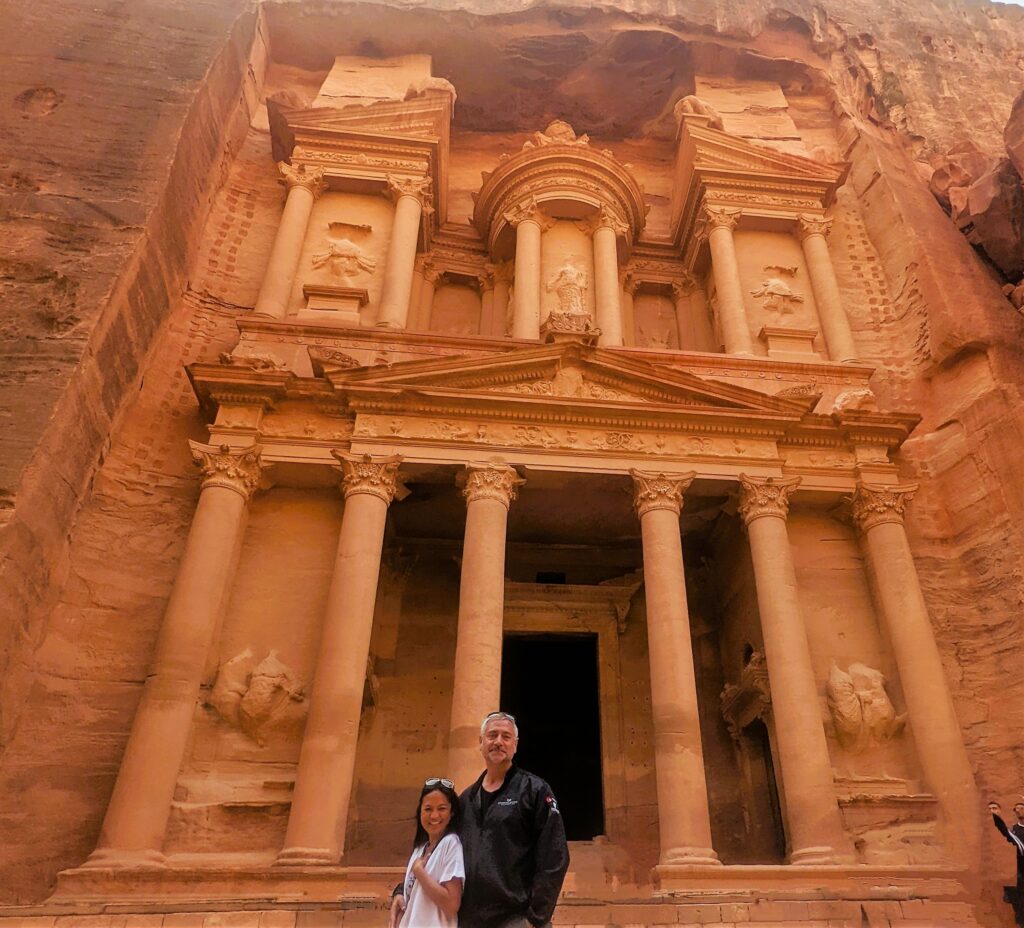
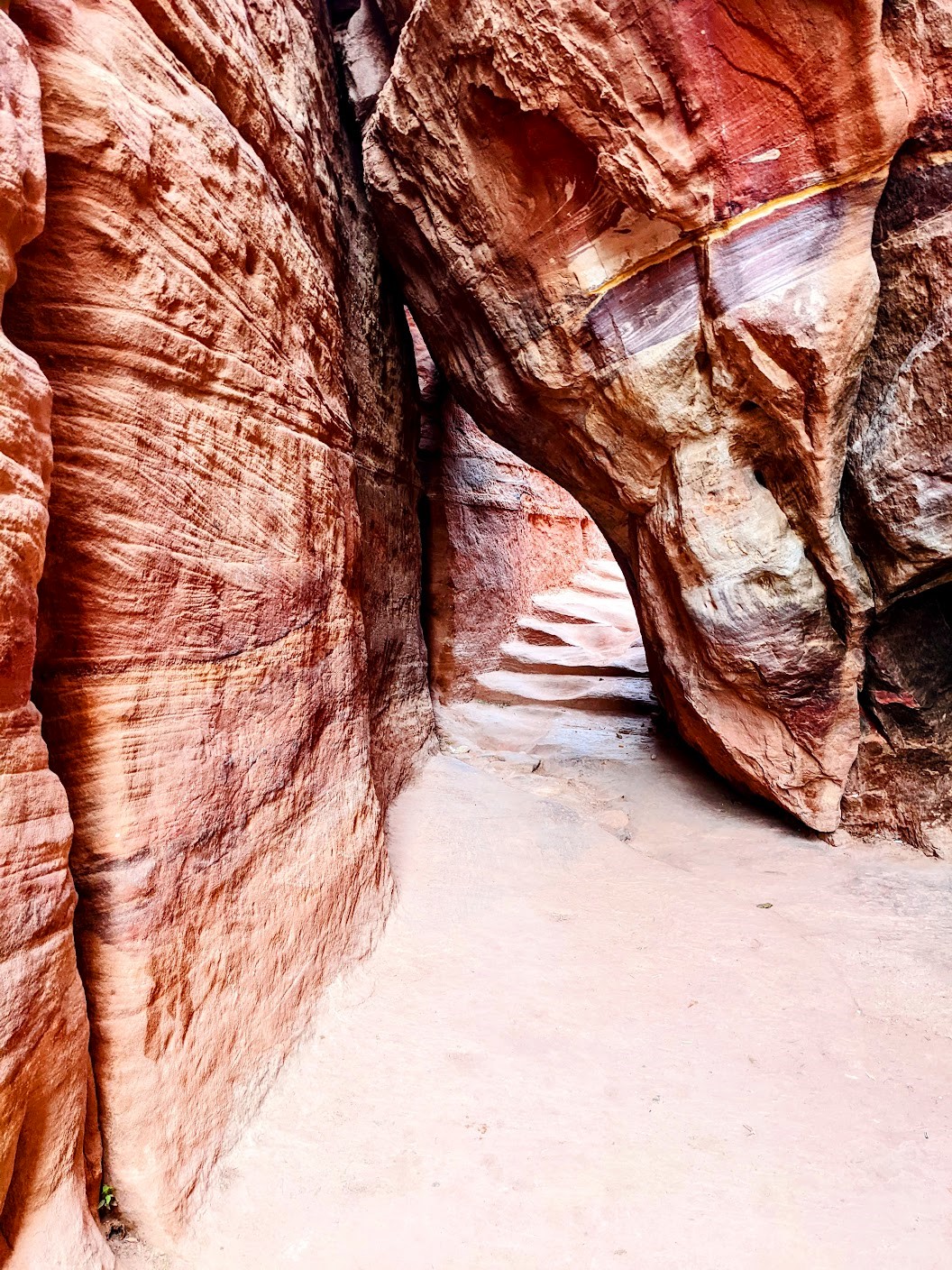
Once In A Lifetime Opportunity
Back at the hotel that night, we showered and relaxed for a bit, talking to one another about how astonished we were by all that we had seen that day.
Recharged, we headed out for an outstanding meal at the Cave Bar, a restaurant that converted an ancient tomb into a cool spot that serves fantastic cocktails. It’s not only a good spot, but it’s actually quite unique in Petra. Other than some hotels that provide some wine for western tourists, it was the only place in Petra where you could walk in and buy cocktails. This made it a very popular spot for tourists like us, and the food and service were outstanding as well.
While we were eating dinner, we started talking about how disappointed we were at not being able to make it to the Monastery. It was something we both really wanted to see. Constructed in the mid-first Century CE, the Monastery, or Ad Deir in Arabic, is approximately 154 feet high and 157 feet wide, and was used for religious purposes by the Nabateans. It is similar to The Treasury in architectural style, mixing Hellenistic and Mesopotamian styles, but the Monastery is not completely built into the rock, with the top of the structure exposed to the elements.
It is also incredibly remote, even more so than The Treasury, so seeing it in person is even more special and unique.
Moment of Truth
We started doing the math as we knew we had to be at our hotel at noon the next day to make our ride back to the border. Could we possibly wake up at 6:00 AM, get to the gates when they open at 7:00 AM, and make the two-hour trek up the hill? Then climb down the steps, back out the trail, taxi to the hotel, and turn it around to catch our ride at noon?
We contemplated and glanced at each other for a few moments, as we noshed on our tapas and sipped our wine. Then Deborah raised her glass and I raised mine, and we touched glasses with a salute. We were going for it!
Sitting on the top of the mountain the next morning, sipping my coffee while looking at that glorious temple, and trying to ignore the donkey, I was beyond pleased we made it happen.
There is no doubt that we want to come back and see a lot more of Jordan, including Amman, Wadi Rum, and the Jerash Ruins. Our schedule this trip only allotted time for Petra, but we wanted to make sure we saw all of it. The extra effort to make it to the Monastery that morning was completely exhausting at the time, but totally worth it, and we’ll never forget it.
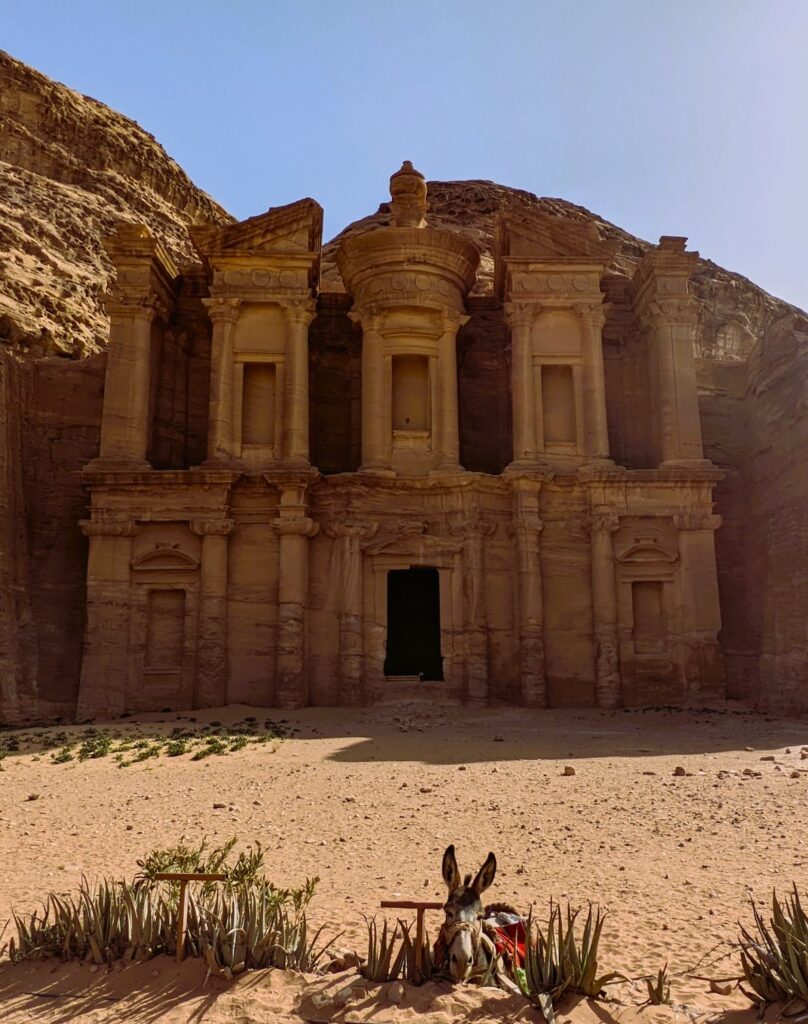
Reasons Why You Should Visit Petra
In hindsight, we loved seeing the ancient city of Petra, but we didn’t realize until after we left the other parts of the adventure that also made a big impact on us. It left us wanting more.
First and foremost, the dramatic landscape of the Arabian Desert in and around Petra is unbelievable. The stark contrast of the desert, juxtaposed with incredibly vertical mountains anchoring the landscape around you, is something I’ve never seen before.
From a distance, the sand appears to climb the lower portion of the mountains, almost like a beach surrounding the mountains. It’s truly a unique landscape, and that’s before the road climbs in elevation. Once you get a few thousand feet above sea level, the views are truly stunning.
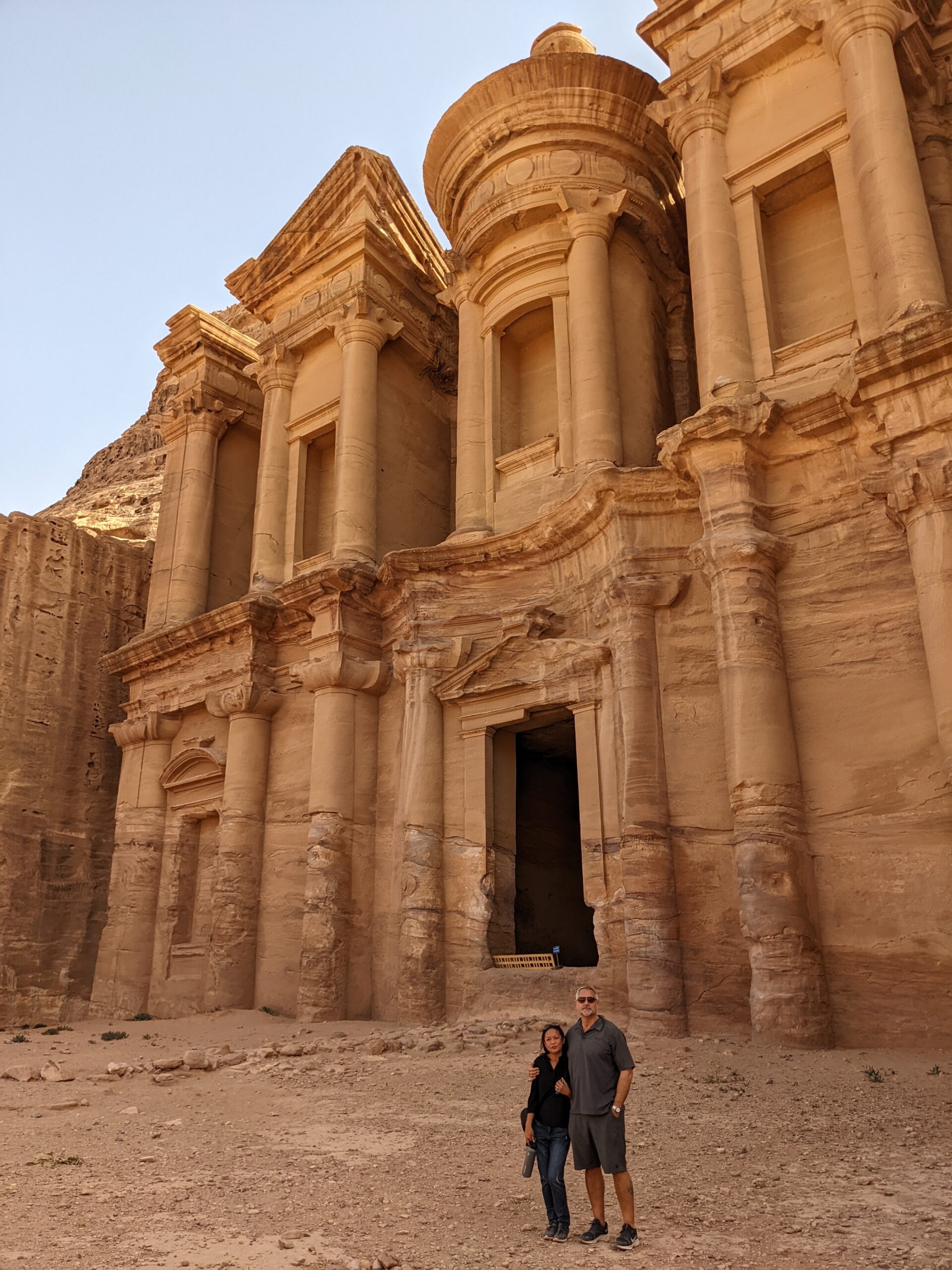
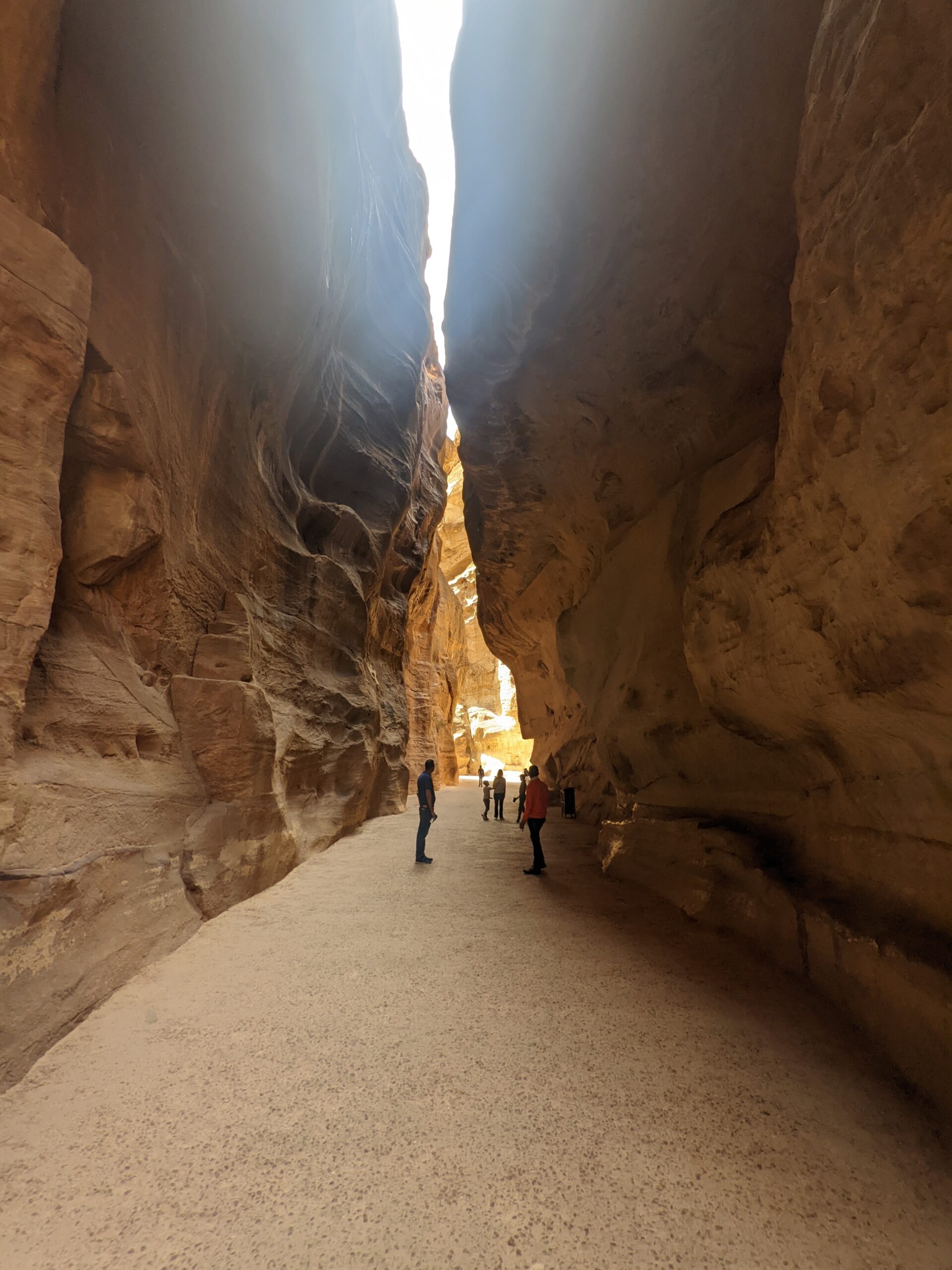
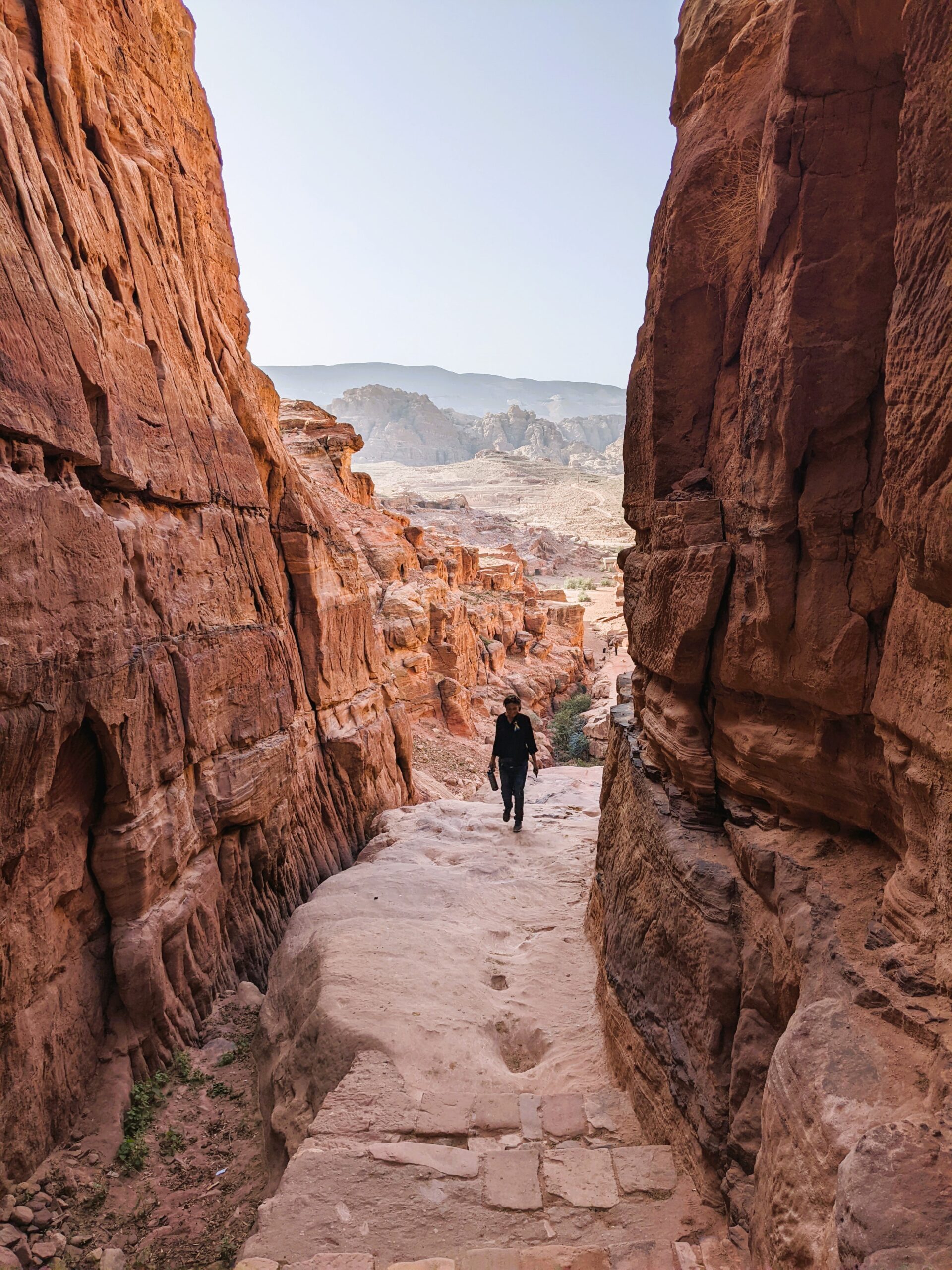
People, Community, and The Food They Share
Another amazing experience of the trip that we weren’t expecting was the food we ate in Petra. Upon arrival, the tour had a place for us to eat lunch close to the entrance of the ancient city. Served buffet style as part of the tour, I didn’t have huge expectations as often tour companies’ choices of restaurants can be less than stellar. Fortunately, the restaurant we ate at was really good, and we were pleasantly surprised by the amount of local dishes that were being served.
Of course, there were basic staple items for the region, like falafel, hummus, dates, and labneh, but the one dish that we had never had before, or even heard about, was Maqluba. The word meaning “upside down,” Maqluba is a dish that consists of meat, rice, and fried vegetables, which is placed in a pot to be cooked and then flipped upside down when served. We thoroughly enjoyed this dish and can’t wait to come back and explore more of Jordanian cuisine.
The other aspect of our visit that left a lasting memory was the proud, spirited temperament of the Jordanian people we met. Humor was a common theme in our conversations, but so was pride and purpose as a people. It was a sense of knowing Jordan’s history, and therefore, their place in history, and it was infectious. We can’t wait to get back and see more of this great country.


